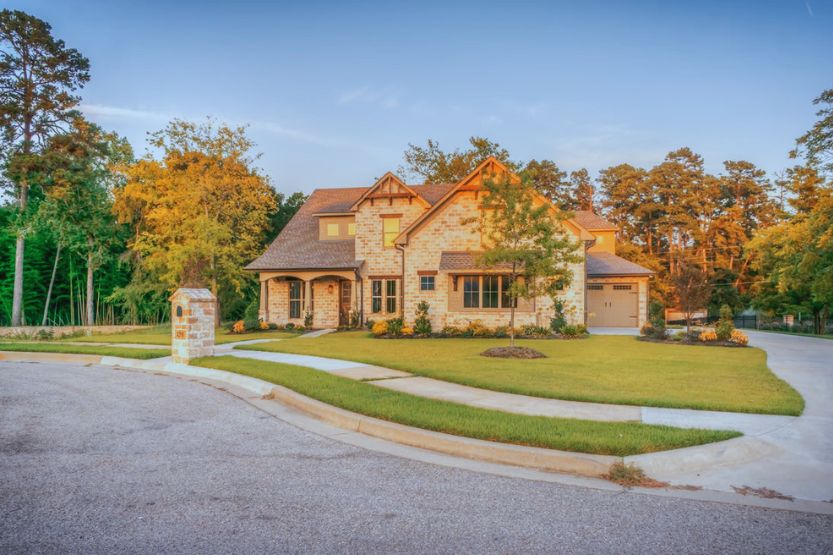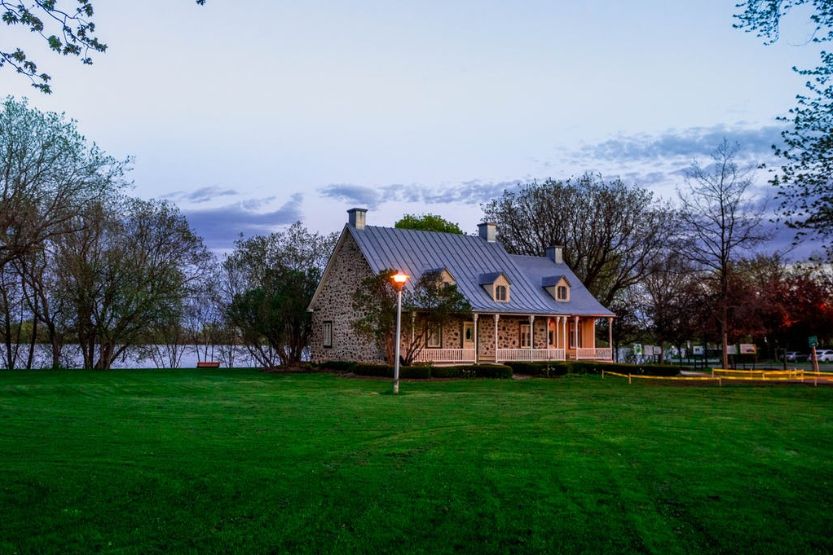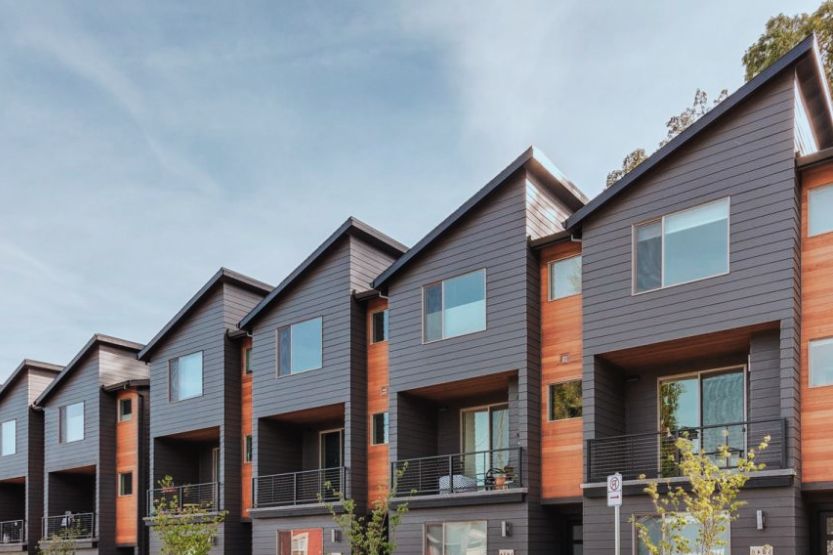Looking for a house can be confusing. Different types are available, each with its respective pros and cons. Among others, one option to consider is a freestanding house. What is a freestanding house? Is this the right option for you?
A freestanding house is a single-detached residence. It is a type of dwelling with no adjoining walls on all sides. It offers plenty of benefits, including space, privacy, freedom, and versatility. You can build and create around the house. Nonetheless, it also has some drawbacks, the most notable being its cost.
Read on to learn more about freestanding houses, including their pros and cons. By the time you are done, we’ll help you decide if it is a good choice or if you should choose another dwelling type.
What Is a Freestanding House?

A freestanding house, as the name implies, is a house that stands freely. This means that there are no adjoining walls on all sides, except for the shed or garage, which technically still forms part of a house.
It is detached from all sides of the lot. You will find an open space surrounding the physical structure.
Other names for a freestanding house include single-detached home or single-detached residence. It is a popular option for families because it has the luxury of space, especially for those who want a place where children can play. Although, the price can be a burden for some buyers.
Pros and Cons of Freestanding Houses
Pros
Now that we talked about the freestanding house meaning, let’s have a quick rundown of some of the reasons why it is an excellent option for you:
1. Provide the Luxury of Space
One of the best things about living in a freestanding house is that you have the luxury of space. There is no other home or structure that is connected to your wall.
You can also add a shed or a garage and build a garden depending on the size of the lot where the house stands. This makes it an excellent pick for families as there is ample space for children to move around outside the home.
2. More Privacy
If you do not like having anyone living directly next to your residence, a freestanding house is for you. Yes, you can have neighbors, but their structures will not be connected to your dwelling. They will be at a certain distance so that you can enjoy privacy.
3. Freedom to Build
When a house is attached next to yours, you will have limited options for building or renovating. In most instances, you need to seek a permit from your neighbor, and you might be declined because there is a risk of damaging the nearby structures and weakening the foundation.
In a freestanding house, you will not have such concerns. You can build and renovate the home if it is a part of your property.
4. A Great Investment
If you are thinking of investing in real estate, then a freestanding house can present an excellent opportunity. Because of its many benefits, it has a vast potential to be a money-maker, although such is highly dependent on the real estate market or macroeconomic factors.
Cons
While it has its fair share of benefits, it is undeniable that freestanding houses also have their shortcomings, including those that we’ll talk about below:
1. Expensive
The cost of a freestanding house is one thing that stops most people from buying one. Compared to a semi-detached duplex, condo, or apartment, among other types of dwellings, freestanding homes are often the most expensive.
Hence, if the budget is an issue for you, you might want to consider other types.
2. High Taxes
It is not only the purchase price that is expensive in a freestanding house. Even the taxes can put a financial strain, but this will depend on the tax rates in your location. Nonetheless, freestanding homes traditionally have higher taxes compared to other dwelling formats.
3. Maintenance Requirements
All types of dwellings require proper maintenance. However, because freestanding houses have open spaces, care can be more of a headache, especially if you have a large home.
Unlike living in an apartment or condo, you will also oversee maintenance, wherein the management can take care of your maintenance needs.
Tips and Tricks for Finding the Best Freestanding Houses

Are you in the market for a freestanding house? To help you narrow down your choices, below are some of the most critical considerations:
1. Location, Location, Location
As with other styles of houses, location is a primary consideration. A good location will increase the price, but it is worth every dollar! If you have the budget, we recommend picking a freestanding home in a strategic location.
It is convenient if you are next to essential places, such as hospitals, schools, malls, and restaurants. Although some prefer a quiet environment, they would rather stay in a freestanding house away from the crowd.
2. Size
There are two things that you must consider when it comes to the size of freestanding houses. The first is the size of the house itself, which should match your requirements. Are you a big family? Or are you thinking of having a lot of kids in the future?
Then a bigger house is a practical option. Also, you need to consider the size of the house’s lot. The size of the house and the lot are directly proportional to the price.
3. Set a Budget
Before searching for a freestanding house, you should already have a predetermined budget. Assess your financial situation and decide what is most appropriate to spend for a home.
If you are applying for a mortgage, consider its long-term implications for your finances. Stick to your budget. If it is above your price range, try negotiating to arrive at a favorable price.
4. Find a Good Realtor
Make things easier for you by working with a reputable realtor. An experienced professional will not only provide valuable insights but will also have connections that can help you find the best possible deals.
Plus, they know how to negotiate, increasing the chances that you will get your freestanding house at the price you have been eyeing.
Again, what is a freestanding house? A freestanding house, stand-alone house, single-detached dwelling, detached residence, or detached house is a freestanding residential building. Some also refer to it as a single-family home.
Different Styles of Homes – 10 Architectural House Styles
Freestanding Houses: Buy or Build?
Those who want freestanding homes will have two options: buy one ready for occupancy or build from scratch. There is no wrong or correct answer. Individual circumstances and preferences will dictate the better option.
Cost and convenience are two of the most common benefits of buying. This is for people who do not have the luxury of time to wait. Depending on the condition, most are almost ready for occupancy so that you can move in immediately. It is also a great way to save money because it is already built.
On the other hand, building a freestanding home offers freedom and versatility. You can decide on the size. You also have the freedom to design the layout of the house as you wish so it is within your specifications.
This is an excellent option to bring your dream home to fruition. Nonetheless, it is often costly. Throughout the time you are building, many more expenses could come up. Plus, making the structure can also take time.
Alternatives to Freestanding Houses Worth Considering

If you think that a freestanding home is not suitable for your needs and budget, below are some of the best alternatives worth considering:
1. Semi-Detached Family Home
It is the closest alternative that you can have to a freestanding house. In the latter’s case, there is no adjoining wall on all sides, also called a single-attached residence.
On the other hand, in a single-detached home, one side of the wall is free, while there is an attached structure on the other.
2. Townhome
In a townhome, you will be sharing the walls with other owners. If you are in the center, there will be a house to your left and right. However, if you are in the end part, one side of the wall will not have an attached structure.
It is also often called a row house because it is one row with multiple houses. They are narrow and vertical, with most units lacking side windows. It also usually includes a garage in front of the unit.
3. Condo
Especially if you are living in big cities where space is considered a luxury, a condo is a practical option for a dwelling. It has several areas housed within one building, maximizing the use of available space.
You will also share communal spaces like a swimming pool, basketball court, and playgrounds. They are often high-rise buildings, but mid-rise developments are also available. It is a good option for small families, couples, or singles.
This is also great because property management provides security. Not to mention, most condos are in convenient locations.
4. Co-Op
From appearance to function, a co-op is almost like a condo. However, there are differences in legal and financial arrangements. With a co-op, you will not own a specific unit. Instead, you are a part owner of the entire building.
This is like being a shareholder. The number of units you have will correspond to the number of shares. Nonetheless, owners do not get as much freedom since most things will require group approval.
5. Apartment
This is another excellent option for those who prefer communal living. A single entity owns the building, and the units are rented out to tenants. This is the main difference between an apartment and a condo since, with the latter, the units have individual owners.
Some might not like how it does not build equity on the residence, and you have less freedom since you do not own the unit where you live.
Frequently Asked Questions – Freestanding Houses
What Is a Freestanding House?
A freestanding house is a single-detached residence. It is a perfect option for a family home if you want space, privacy, and flexibility.
As the name implies, the house stands freely, which means that there is no other house or physical structure in the adjoining walls. You will be free to build around the house if it is within the lot you own.
What Are the Benefits of a Freestanding House?
The luxury of space is one of the best benefits of a freestanding or single-detached house. There will be no structures on the sides, so you have the freedom to build.
You can also enjoy versatility since you are not limited in what you can do with the space next to your house, unlike when you live in a townhome, condo, apartment, or similar dwellings.
In Closing – What is a Freestanding House?
Are you thinking of buying a new home? Different types are available, and one that is worth considering is a freestanding house. As the name implies, it is a single-detached dwelling.
There are no other structures attached to the walls. This is an excellent option for families looking for the luxury of space.
Aside from being spacious, another benefit of a freestanding house is that you can build around it. This is unlike townhomes, duplexes, or other dwelling types with walls next to yours.
Not to mention, you can also enjoy privacy. However, it can be expensive, but it will depend on many factors, such as size and location.






![Read more about the article Rug on Top of Carpet [Tips for Area Rug on Carpet]](https://homecarezen.com/wp-content/uploads/2022/01/rug-on-top-of-carpet-300x200.jpg)
![Read more about the article Types of Wood for Furniture [3 Main Types]](https://homecarezen.com/wp-content/uploads/2021/01/types-of-wood-for-furniture-300x200.jpg)
